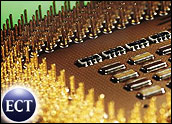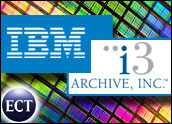
Research in Motion (RIM) announced this week that it would be using Intel processors for its next-generation wireless devices, a move one analyst called a big deal for the chipmaker.
“This is the first real communications processor design win Intel has had with a mainstream handheld communications provider. So, is this significant for Intel? Absolutely!” Jim MacGregor, principal analyst for In-Stat, told TechNewsWorld in an e-mail.
“Unless RIM scraps the project for some reason, this should guarantee Intel the volume it has lacked thus far,” he added. “It also marks a foothold into the arena dominated by Freescale, Texas Instruments, etc.”
Favoring Hermon
The companies said RIM will design its Blackberry communication devices with Intel’s XScale architecture and PXA9xx cellular processor, code-named “Hermon,” with a speed of about 1 GHz. RIM is the first to announce that it will use the chip, which Intel is designing specifically for the mobile communications market.
Previously, Intel tried to enter the mobile market with Manitoba, but fell flat.
RIM said the devices using Hermon should be out by the end of the year. Although pricing and model specifics were not announced, RIM president Mike Lazaridis said the company will create a device that combines messaging and cell phones.
Faster, But Not Fastest
The new Blackberry will run on high-speed EDGE (Enhanced Data Rates for Global Evolution) networks. EDGE pushes the speeds of GSM (global system for mobile communication) networks, the most widely used mobile networks, to a maximum bandwidth of 384 Kb. It is not as fast as Universal Mobile Telecommunications System (UMTS) networks, which can reach download speeds of 3 GB, but are more prevalent in Europe than in North America.
The differences between Intel’s chips and those of others are likely to be minimal to consumers.
“Intel’s solution provides similar functionality to that from other vendors. Typically, the big difference is architecture,” MacGregor noted. “There may also be minor differences in performance, feature sets and power consumption.”
“I am not sure if the Intel solution that will be used by RIM is a one-chip or two-chip Intel solution. If it is the two-chip, which I suspect, this would be another difference between the on-chip solutions offered by the other vendors,” he said.





















































